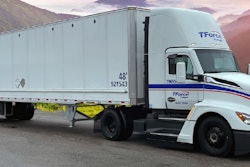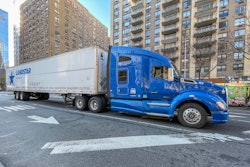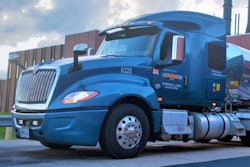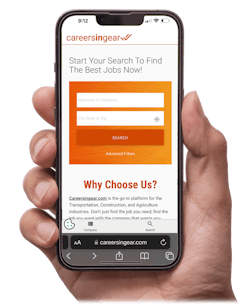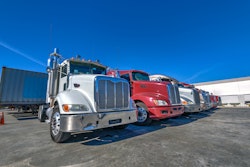Legislation at the state and federal level clearly has a lot of influence in what motor carriers can and cannot do, but lawmakers aren’t the only needle movers when it comes to things like sustainability, the trucking workforce and an ongoing migration from highway transport to rail.
Contents of this video
00:00 10-44 intro
01:13 ESG plans
02:00 Replacing aging workforce
03:44 Younger drivers
05:05 Motor carriers and railroad
05:58 Subsidies and smart highways
Speaker 1:
The transportation industry is evolving. Today we're looking at a few of the top pressures motor carriers face in this ever-changing trucking landscape. You're watching CCJs 10 44, a weekly episode that brings you the latest trucking industry news and updates from the editors of CCC J. Don't forget to subscribe and hit the bell for notifications so you'll never miss an installment of 10 44. Hey everybody, welcome back. I'm Jason Cannon and my co-host is Matt Cole. Legislation at the state and federal level clearly have a lot of influence in what motor carriers are allowed and not allowed to do, but lawmakers aren't the only needle movers when it comes to things like sustainability. The trucking workforce and an ongoing migration from highway transport to rail
Speaker 2:
Subsidies and grants will play a large role in how quickly trucking goes, zero emissions. But shippers will play a role too through environmental, social and governance goals, even if shippers don't want to pay for their implementation.
Speaker 1:
ESG plans were the hot thing just a couple of years ago as a way for shippers to say, look what we're doing, even if motor carriers were the ones doing all the heavy lifting, but a soft economic climate right now has stolen a little bit of that ESG thunder because no one, not the carrier, the shipper or the consumer is excited to pay for it.
Speaker 3:
So shippers have on their bottom line and report out to their stakeholders a sustainability score and transportation in the movement of goods plays a large part of that. Consumers kind of demand it as sort of an afterthought, but as in everything else on the planet, everyone buys on price. So a consumer will say, given the choice between one or two things, if they're equal in price but one is more sustainable, I may make that decision. But candidly, people shop on price. So I think it's important, but it's taken a backseat right now, especially with the volatility of the economy. People really aren't sure where things are going, so it's there, but it's not a primary driver as it was, I would say about a year, a year and a half ago,
Speaker 2:
Transportation, not just driving jobs as one of the oldest average workforces among all US professions. A lot of work has gone into making transport jobs more attractive to Gen Z, but that's not the group that's finding its way into these roles.
Speaker 3:
I think the attractiveness of this profession has really moved to what I would call immigrant populations, and that's in the US and it's in Canada. People who are new to the country tend to go into these kinds of industries. Young people today are just not interested in it. And for all the talk about AI and automation and all of these things, the distance from Toledo to Dallas hasn't changed at all, nor will it change, and a ton of steel still weighs a ton of steel, so we can optimize things, we can add creature comforts. There's even automation around trucks and the ability to be self-driving and electrification. I think that's still far away and younger folks are just not interested in this profession. I think it's seen as an entry level. College educated folks do not want this as a starter profession, but a lot of people who are new to the states, new to Canada and new to even Europe, that's where the market for drivers is coming from and people are aging out not just in transportation, but in supply chain as a whole. It used to be, I mean, just candidly speaking, old white guys like me, that would be leaders in supply chain and logistics, but that's changing. We've got a lot more diversification in that, and driving is primarily still a young male population of people in that workforce, and it's coming from new arrivals to the country.
Speaker 1:
Transportation is trying hard to be a more friendly place for a youth movement, removing some of the restrictions for drivers under the age of 21 under certain conditions. But Tom says trucking is fighting for a share of an age group that is convinced making videos of what they're eating for lunch is a viable long-term career.
Speaker 3:
I think it'll provide a little bit of a meaningful change. I wouldn't put all my eggs in that basket. I mean, here's the reality today. If you are a truck driver, your wages are probably being pushed downwards as opposed to upwards, and people are reluctant to pay more just because the cost pressures in the industry overall. So I think you're going to get more of an upswing in people entering the business if we try and increase wages, and that's going to be tough because everything is competitive right now. Certainly making it available to people 18 and over will open the market a little bit. Look, I know we're transportation centric here, but I think that pressure is being felt in all of the trades. If you see even people being plumbers and electricians and carpenters, that cohort is smaller than it used to be. People are, for lack of a better word, wanting to have comfortable office jobs or being YouTube influencers, and the thrill of the open road is just a smaller set of market,
Speaker 2:
Whether driven by labor or freight efficiency. We're certainly seeing an ongoing shift of freight off the highway and onto rail and motor carriers like JB Hunt and Schneider are embracing it.
Speaker 3:
Moving things by rail is greener and cheaper than moving it by truck. And so to be a mode shifter from over the road to rail ticks a lot of boxes. It's cheaper, it's greener, it's less prone to disruption in many cases just because you don't have the day-to-day inconsistencies and unpredictability of over the road transportation. I think what's happening to these trucking companies that they're seeing that that's a way of them to just diversify, and candidly, I think that's going to probably continue because having everything dependent on just over the road is going to limit the market. So I think these companies are just the first diversifying to be service providers in a multimodal universe.
Speaker 1:
As Matt mentioned earlier, subsidies are an important factor, if not the factor when it comes to absorbing acquisition costs from alternative fuel equipment. But the emphasis on subsidizing that transition on the federal level could unlock opportunity to smarten up the highway system.
Speaker 3:
I think the move away from subsidizing electrification of the fleet is definitely going to happen, and candidly, depending on who you talk to, even that long-term, maybe electrification is the answer we don't know. Hydrogen has a much larger viewpoint on whether it's a sustainable fuel or not. Where I think those dollars are going to go is into making our highway smarter, and this is where the AI play may actually make a difference in supply chain and logistics. The more information we can get on the flow of traffic, when are the peak periods, when is it better to move goods rather than put the money into electrifying the National Highway system and providing electrified trucks? It's just providing more data that can be used to optimize the movement of goods, whether it be alternate routes, whether it be time of day, whether it be what size of vehicles take what routes.
So I think the money's going to go there before it goes into providing subsidies to electrify the massive fleet of trucks we have on the road today. Look, it's going to get smarter the way we load, build the way we plan routes. It's just going to get smarter because the real time nature of that data will just increase. You're just going to have more information so people can make last minute decisions as opposed to today we're planning rather than planning 24 hours ahead. Some people are planning hours ahead of which route they take time to destination providing accurate ets, and it's this partnership between the service providers like the trucking companies and their customers where they say, Hey, listen, I can give you a better deal if you're okay with the truck being one day late or even one hour late. So that data that is being collected at a national level now, I think there's going to be a national program that says, okay, this data needs to be collected in aggregate rather than privatize.
Private companies will keep collecting the data, but that data will be made available nationally through government programs, and I think it'll kind of democratize the way transportation is managed and planned. So I think that's where the larger play will be. Again, we live in the world of physical assets and physical things. Like I said earlier, distances between cities don't change. Weights of material we carry doesn't change, so it's going to be in the optimizing all around those things, and then there will be a little bit of a technological shift in the way vehicles are built, the reporting from vehicles about maintenance schedules, all of these kinds of things is where the technology will be applied. More so than saying, Hey, give me a plugin battery for a truck.
Speaker 1:
That's it for this week's 10 44. You can read more on ccj digital.com. While you're there, sign up for our newsletter and stay up to date on the latest in trucking industry news and trends. If you have any questions or feedback, please let us know in the comments below. Don't forget to subscribe and hit the bell for notifications so you can catch us again next week.

